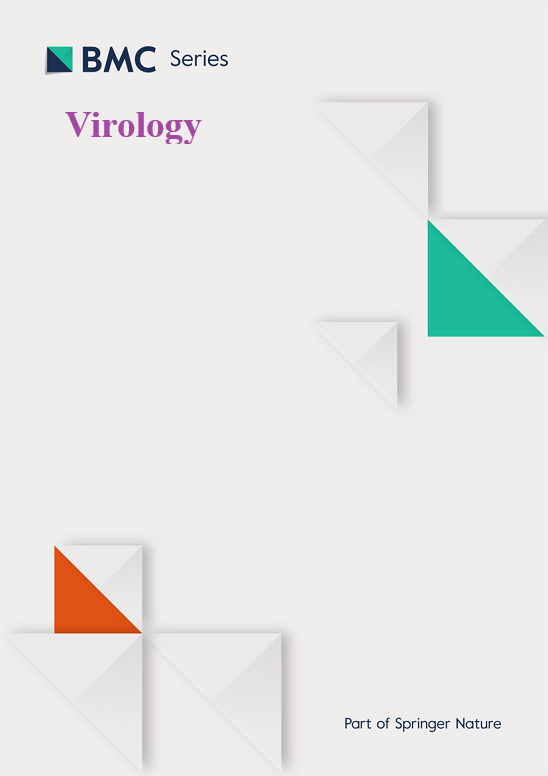汉滩正汉坦病毒(HTNV)中和抗体定量检测方法的建立与优化
IF 2.8
3区 医学
Q3 VIROLOGY
引用次数: 0
摘要
啮齿动物传播的正汉坦病毒在世界范围内引起严重的出血热,在欧亚大陆有肾综合征出血热(HFRS),在美洲有汉坦病毒心肺综合征(HCPS)。在东亚,汉滩正汉坦病毒(HTNV)是导致严重HFRS的主要病原体,在没有特异性治疗的情况下,病死率高达10%。抗血清或中和抗体(NAb)能够阻断病毒感染,但传统的基于减焦中和试验(FRNT)的NAb滴度测量非常费力,需要7-10天。本研究旨在利用定量RT-PCR技术将NAb中和效率的测定时间缩短1-2天。为此,我们建立了体外转录病毒RNA标准,并生成了病毒RNA拷贝数标准曲线。利用该标准曲线,我们比较了HTNV病毒RNA拷贝数与分泌感染性病毒粒子之间的传播动力学。同时确定了qRT-PCR检测病毒RNA拷贝数的检出限和适宜的时间和条件。此外,应用该方法测定HFRS恢复期血清样品NAb中和效率时,可在1 ~ 2天内获得NAb中和效率。此外,该方法也与基于FRNT的NAb测量有很好的相关性。综上所述,我们建立了一种快速方便的病毒RNA转录本拷贝还原中和试验(VcRNT),可以在1 ~ 2天内完成NAb的中和效率,为FRNT提供了一种可靠、高效的替代方法。本文章由计算机程序翻译,如有差异,请以英文原文为准。
Establishment and optimization of a rapid and convenient viral RNA transcript copy reduction neutralization test (VcRNT) for quantification of hantaan orthohantavirus (HTNV) neutralizing antibodies
Rodent-borne orthohantavirus causes severe hemorrhagic fever worldwide, with hemorrhagic fever with renal syndrome (HFRS) in Eurasia, and hantavirus cardiopulmonary syndrome (HCPS) in the Amrerica. In East Asia, Hantaan orthohantavirus (HTNV) is the main pathogen responsible for severe HFRS, with a case fatality rate up to 10 % with no specific treatment available. The antisera or neutralizing antibody (NAb) is able to block virus infection, however, the traditional NAb titer measuring based on focus reduction neutralization test (FRNT) is quite labour-extensive and takes 7–10 days. This study aims to shorten the measuring time of NAb neutralization efficiency by 1–2 days based on quantitative RT-PCR. For this purpose, we developed an in vitro transcripted viral RNA standard and generated a viral RNA copy number standard curve. Using this standard curve, we compared the HTNV propagation kinetics between viral RNA copy numbers and secreted infectious virion. The detection limit and suitable timeframe and condition for qRT-PCR based viral RNA copy numbers measuring was also determined. In addition, when applying this method to measuring the NAb neutralization efficiency of HFRS convalescent serum samples, we could obtain the NAb neutralization efficiency within 1 or 2 days. Furthermore, this method was also nicely correlated with the FRNT - based NAb measurement. To conclude, we established a rapid and convenient viral RNA transcripts copy reduction neutralization test (VcRNT) to measure NAb neutralization efficiency that could finish within 1 or 2 days, and provided a reliable and efficient alternative for FRNT.
求助全文
通过发布文献求助,成功后即可免费获取论文全文。
去求助
来源期刊

Virology
医学-病毒学
CiteScore
6.00
自引率
0.00%
发文量
157
审稿时长
50 days
期刊介绍:
Launched in 1955, Virology is a broad and inclusive journal that welcomes submissions on all aspects of virology including plant, animal, microbial and human viruses. The journal publishes basic research as well as pre-clinical and clinical studies of vaccines, anti-viral drugs and their development, anti-viral therapies, and computational studies of virus infections. Any submission that is of broad interest to the community of virologists/vaccinologists and reporting scientifically accurate and valuable research will be considered for publication, including negative findings and multidisciplinary work.Virology is open to reviews, research manuscripts, short communication, registered reports as well as follow-up manuscripts.
 求助内容:
求助内容: 应助结果提醒方式:
应助结果提醒方式:


